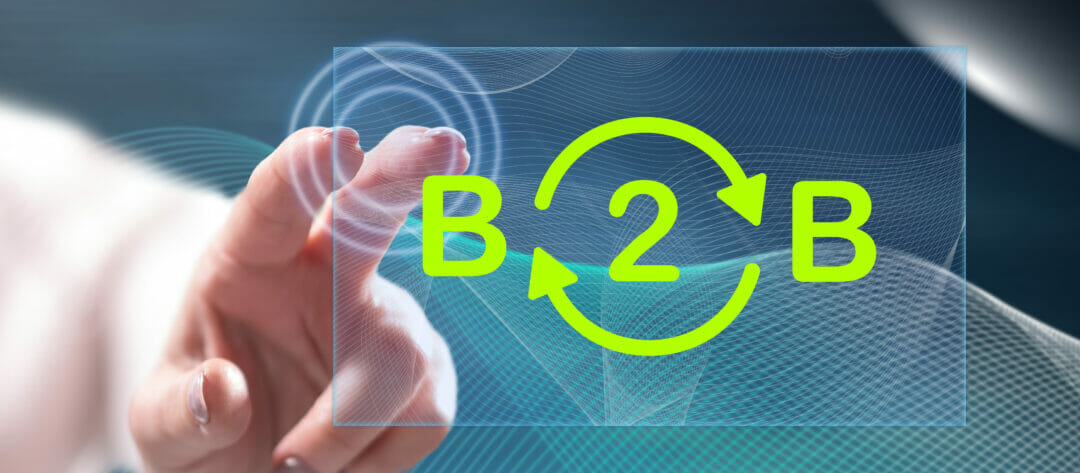It has been another year of significant change in B2B sales. While 2020 was all about rapid adaption to ensure business continuity, the focus in 2021 was firmly on consolidating new processes and scaling activities to improve business performance in the post-pandemic environment.
As we look ahead to 2022, things will shift once again as buyer preferences, priorities and ways of working continue to evolve. The simple fact is that B2B buying has fundamentally changed. Today’s organisations must be agile enough to adapt and keep pace with shifting buyer preferences, while at the same time considering how they can differentiate themselves moving forwards.
As 2021 draws to a close, we’ve looked at three key ways in which the B2B sales environment will develop over the next 12 months – and what sellers will have to do to drive future business growth.
1. From social selling as optional, to digital engagement mandatory
The accelerating digitalisation of B2B buying has impacted businesses in all industries. This will become even more pronounced in 2022, when digital engagements will take centre stage as part of a wider omnichannel strategy.
Buyers have moved online and sellers need to engage with them where they are. As such, sellers will have to embrace digital channels – if they haven’t done so already – and develop the dexterity to engage with prospects and customers effectively across in-person and online interactions.
Social channels will represent the new frontier for building relationships and driving revenue opportunities with younger generations of decision-makers, requiring B2B sellers to develop new digital skills and be supported by intelligent platforms to keep pace.
The use of data will also be crucial. Go-to-market (GTM) teams must prioritise leveraging the vast amounts of data they can now collect – such as content engagement analytics – to better understand buyers’ situations, learn which content resonates best in specific selling situations, and guide reps in their buyer interactions.
How empowering your brand can power customer behaviour in the experience economy
2. From sellers that tell, to sellers that guide
The role of the B2B seller isn’t as clear as it once was. According to Gartner, 43% of B2B buyers say they would prefer a rep-free buying experience, yet ‘purchase regret’ for those customers is 23% higher than for customers who do interact with a sales rep.
What’s clear is that today’s buyers want more of a self-serving environment – one where they can do their own research and be guided by sellers rather than being told what they should buy. Buyers want B2B sellers to help them make sense of the noise and be confident in their decision, which is why 76% value rep interaction when researching a new product or service.
As such, the focus in 2022 won’t be on selling; it will be on delivering a seller-assisted digital buying experience. Sellers will have to act as their customers’ Sherpas – providing in-the-moment direction and advice based on customer needs and pain points. They will have to be much more knowledgeable about business challenges and goals rather than just about product offerings.
For B2B organisations, this means implementing technology that will empower customer-facing teams with the information and insights to make an impact with prospective customers at scale. This will be key to ongoing success in the digital world.
3. From siloed functions, to one GTM machine
Internal teams have long worked in silos and, although this started to change in 2021, businesses can and should be doing more to connect the end-to-end GTM function. In 2022, more businesses will focus on creating one aligned, united GTM operation. Indeed, it will be vital to long-term success.
Businesses will take steps to enable every team that touches the customer, from pre- to post-sale and everything in between. The content creation process provides an obvious example. A recent Forrester report suggests that 59% of business buyers believe the content they get from sellers is useless. What’s more, although sales teams depend on marketing for customer-facing content, 57% of marketers say their sellers spend up to five hours a week modifying content.
This points to a lack of alignment that must be addressed. From the growing need to personalise content, to the increasing demands on quality and relevance, digital platforms can help bridge the gap between teams and optimise the GTM function. Indeed, the use of technology and data can provide valuable intelligence to inform every single touchpoint along the sales journey. Every engagement matters and the importance of internal alignment cannot be underestimated.
The common thread between these three trends is that they all tie back to the customer experience. How customers want to buy and interact with sellers is changing. Providing a consistent experience across all channels and being able to deliver what buyers need in the moment is now vital to addressing both the requirements of the interaction and the expectations of the buyer.
B2B sales is already harder than ever and it’s not going to get any easier over the coming months. Success in 2022 will depend on whether businesses can deliver truly relevant, compelling and insightful experiences across multiple channels at scale. Is your business up for the challenge?








